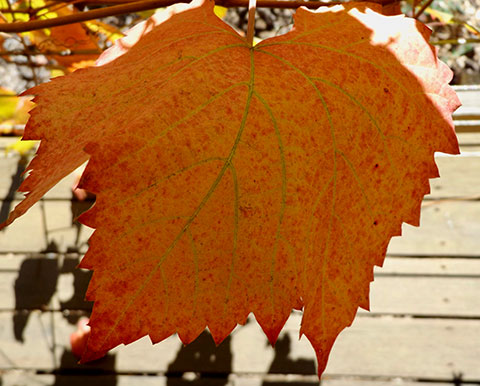
Here on the coast, we lack the crispness to create stunning avenues of Autumn colour as in the Southern Highlands or Canberra.
But my Glory Vine, or Ornamental Grape, does its best. It has been moving with me via cuttings from the Mountain original. It colours differently here, but then our Autumns are not the same under global warming. Mid-day is still too warm here.

Despite the stunning cyclamen pinks and burgundies of leaves up close, surprisingly, overall it creates a more orange effect, as the still green leaves mingle with their fellows further along towards their deciduously bare winter fate.
Here’s an explanation of the colour change process from the ’www.sciencemadesimple.com’ site:
‘During winter, there is not enough light or water for photosynthesis. The trees will rest, and live off the food they stored during the summer. They begin to shut down their food-making factories. The green chlorophyll disappears from the leaves.
‘As the bright green fades away, we begin to see yellow and orange colors. Small amounts of these colors have been in the leaves all along. We just can’t see them in the summer, because they are covered up by the green chlorophyll.
‘The bright reds and purples we see in leaves are made mostly in the fall. In some trees, like maples, glucose is trapped in the leaves after photosynthesis stops. Sunlight and the cool nights of autumn cause the leaves turn this glucose into a red color.
‘The brown color of trees like oaks is made from wastes left in the leaves.’

Veins of green chlorophyll amongst mottlings of the other pigments like the carotenoids, responsible for the oranges, with the subclass xanthophyll responsible for the yellows and the sugar-making anthocyanin favouring the reds.
A chemical riot!